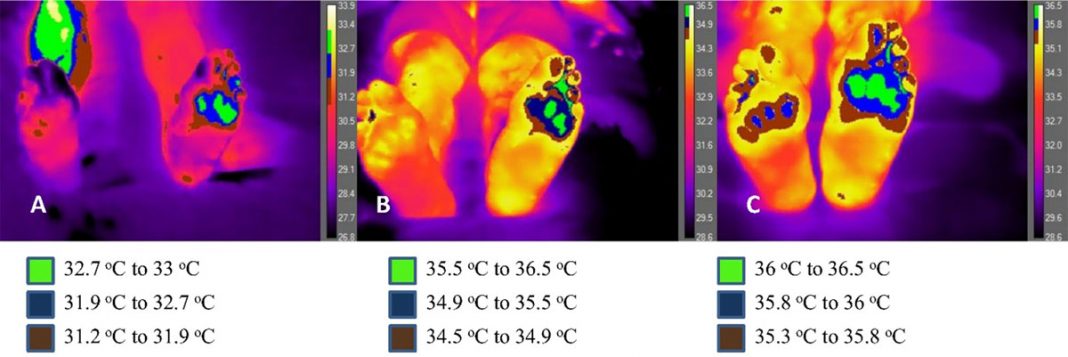This is to congratulate Dr. Stephanos Ioannou and his team for the initial acceptance of his grant proposal for the Disability Research Grant Program at KACST. The funding of the proposal entitled: “Subcutaneous Temperature Abnormalities on the Diabetic Foot Predict Development of Irreversible Symptoms: A thermal Infrared Imaging Study) is currently being secured. The total price funded is 200,000 SAR.
The aim of this proposal is to elucidate a fast, cost effective method for evaluating the appearance of macrovascular alterations in diabetic patients before they become increasingly problematic. Alterations in blood flow on the extremities of the body and particularly the feet would be reflected in terms of temperature. Infrared imaging is particularly designed to measure temperature alterations with a sensitivity of ± 0.01, non-invasively and contact free while covering a broad surface of the skin. Early detection will lead to saving a lot of amputation before even occurring by creating a thermal profile of the patient and monitoring them throughout their treatment.
We wish that this project goes very smoothly and adds important new findings to the medical literature.
Abstract
Diabetes is one of the modern medicine conundrums and huge burdens worldwide. According to the World Health Organization (WHO) estimations, diabetes prevalence will have increased from 2.8 in 2002 to 4.4% in 2030, while others anticipated a further increase to 5.4% of the total population, which means over 300 million diabetics around the world. The globalization of a western lifestyle is a key health care issue, as it has proven to be a major constituent to different pathologies especially in the increased prevalence of diabetes mellitus type 2. Along with the various complications of type 2 diabetes (micro and macro-vascular, cardio vascular, ocular, renal, etc.), diabetic foot ulcers being one of the most common chronic complications, but it has been especially marked to be the leading cause amputations and limb loss, constituting for over 85% of amputation cases. And since 15-20% of people with these lesions will need amputations, it has been estimated to trouble 15% of the diabetic population during their lifetime.
Thermal infrared imaging provides a new avenue for examining macro-vascular alterations in diabetics, as these changes would be reflected on the subcutaneous thermal print of the foot. The following study aims to develop precise medical biomarkers that would not only diagnose but also predict the occurrence of a diabetic foot. It is expected that individuals at the beginning of diabetic lesions will have a well elevated temperature due to inflammation. As the disease progresses with alteration in peripheral vascularisation then temperature will be well below the baseline. Healthy controls will help us define normal temperature values in individuals with no peripheral neuropathies.














